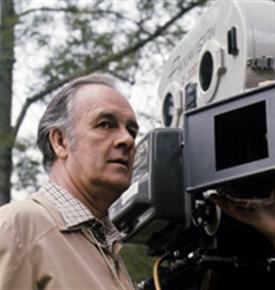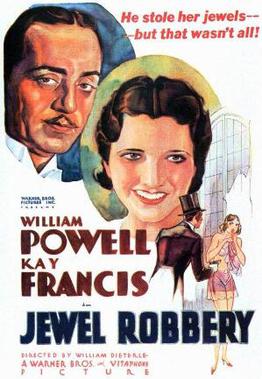
Julie Frances Christie is a British actress. Christie's accolades include an Academy Award, a BAFTA Award, a Golden Globe, and a Screen Actors Guild Award. She has appeared in six films ranked in the British Film Institute's BFI Top 100 British films of the 20th century, and in 1997, she received the BAFTA Fellowship for lifetime achievement.
The year 1938 in film involved some significant events.
The following is an overview of 1930 in film, including significant events, a list of films released and notable births and deaths.

Peter John Bowles was an English screen and stage actor. He gained prominence for television dramas such as Callan: A Magnum for Schneider and I, Claudius. He is however, best remembered for his roles in sitcoms and television comedy dramas, including: Rumpole of the Bailey, Only When I Laugh, To the Manor Born, The Bounder, The Irish R.M., Lytton's Diary, Executive Stress and Perfect Scoundrels.

Rebecca is a 1940 American romantic psychological thriller film directed by Alfred Hitchcock. It was Hitchcock's first American project, and his first film under contract with producer David O. Selznick. The screenplay by Robert E. Sherwood and Joan Harrison, and adaptation by Philip MacDonald and Michael Hogan, were based on the 1938 novel of the same name by Daphne du Maurier.

Donald Herman Sharp was an Australian film director.

Helen Vinson was an American film actress who appeared in 40 films between 1932 and 1945.

Helen Virginia Parrish was an American stage and film actress.

Barbara Bedford was an American actress who appeared in dozens of silent movies. Her career declined after the introduction of sound, but she continued to appear in small roles until 1945.

Donald Hugh MacBride was an American character actor on stage, in films, and on television who launched his career as a teenage singer in vaudeville and went on to be an actor in New York.

Barbara French Read, also known as Barbara Reed, was a Canadian-American film actress of the 1930s and 1940s, who appeared in 21 films during her career.

The Story of Seabiscuit is a 1949 American drama film directed by David Butler and starring Shirley Temple and Barry Fitzgerald in a semi-fictionalized account of racehorse Seabiscuit, the top money winner up to the 1940s. The screenplay was written by John Taintor Foote, uses the actual racehorse names, but changed the names of people involved.

Walter Wanger's Vogues of 1938 is a 1937 musical comedy film produced by Walter Wanger and distributed by United Artists. It was directed by Irving Cummings, written by Bella and Sam Spewack, and starred Warner Baxter and Joan Bennett. It was filmed in New York City in Technicolor.

Jewel Robbery is a 1932 American pre-Code romantic comedy heist film, directed by William Dieterle and starring William Powell and Kay Francis. It is based on the 1931 Hungarian play Ékszerrablás a Váci-utcában by Ladislas Fodor and its subsequent English adaptation, Jewel Robbery by Bertram Bloch.
Married and in Love is a 1940 American film directed by John Farrow.

Footlight Fever is a 1941 American comedy film directed by Irving Reis and starring Alan Mowbray, Donald MacBride, Elisabeth Risdon and Elyse Knox. Produced and distributed by RKO Pictures, it is a sequel to the 1940 film Curtain Call.

Reunion is a 1936 American comedy film and directed by Norman Taurog and starring the Dionne Quintuplets, Jean Hersholt and Rochelle Hudson. It was produced and distributed by 20th Century Fox.

Small Miracle is a 1934 play by Norman Krasna, presented on Broadway with Joseph Calleia in the featured role. Directed by George Abbott with a single setting designed by Boris Aronson, the three-act melodrama opened September 26, 1934, at the John Golden Theatre, New York. It continued at the 48th Street Theatre November 11, 1934 – January 5, 1935. On February 7, 1935, the play began a run at the El Capitan Theatre in Hollywood, with Calleia, Joseph King and Robert Middlemass reprising their Broadway roles.
Fiona Middleton is a fictional character from the British television soap opera Coronation Street, played by Angela Griffin. The actress secured the role following an audition. She was sceptical that it would lead to much and initially presumed that the producers would keep her around for a short time. However, positive viewer reaction led to her role within the show being increased. She made her debut appearance in the episode broadcast on 14 December 1992.














